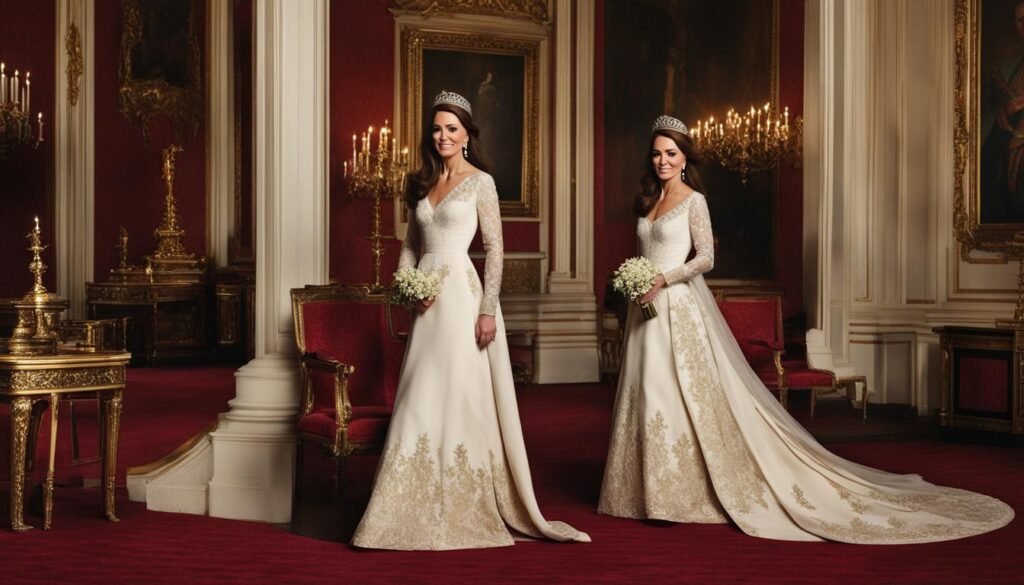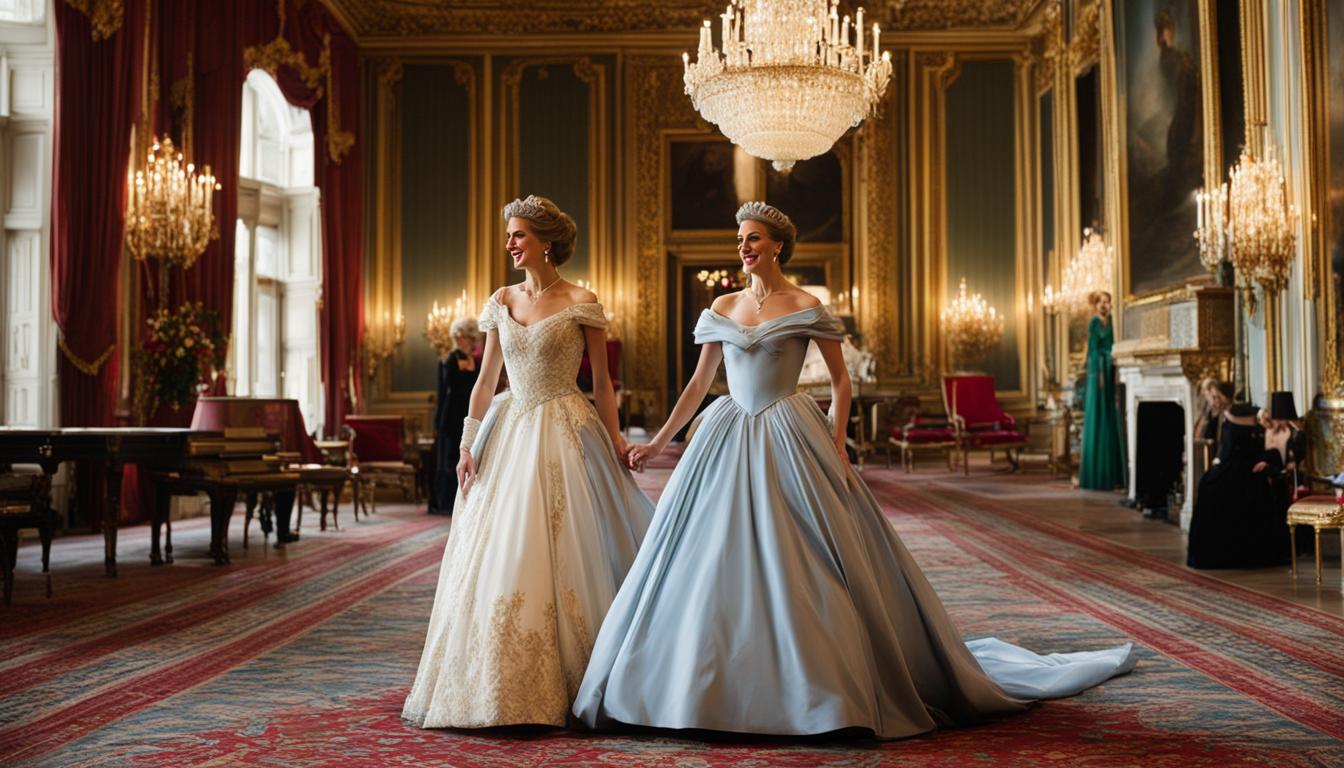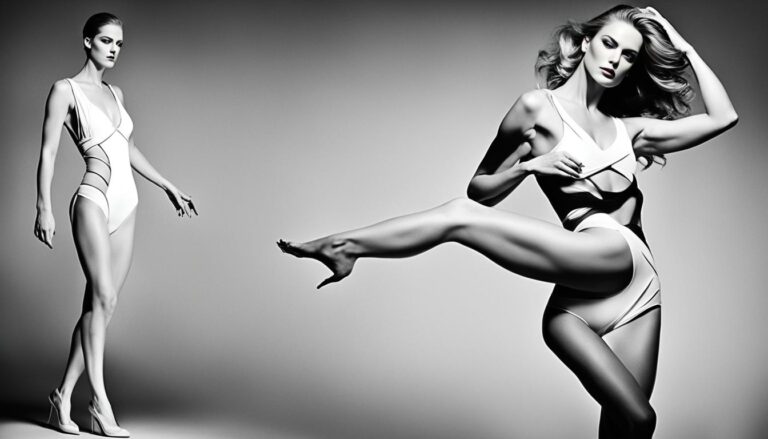Why was Diana a princess and not Kate?
In the realm of the British royal family, royal titles hold a significant role and are subject to long-established traditions. Understanding why Princess Diana carried the coveted title of Princess of Wales, while Kate Middleton became known by a different title, requires delving into the complexities of succession to the throne, royal marriages, and the nuances of British royal titles.
Princess Diana, born Diana Spencer, gained the title of Princess of Wales through her marriage to Prince Charles, the heir to the British throne. This title, first used in 1301, has historically been reserved for the spouses of the Prince of Wales, who are next in line for the throne. Diana’s status as Princess of Wales continued even after her divorce from Charles, allowing her to retain the title until her tragic death.
However, when King Charles III ascended to the throne, the title of Princess of Wales was transferred to Kate Middleton, who became the first person to use it since Diana. As Princess of Wales, Kate’s formal title is “Catherine, Princess of Wales.” It is important to note that while Kate is often referred to as Princess Catherine or Princess Kate colloquially, her formal royal name remains Catherine, Princess of Wales.
But what about Camilla, the wife of Prince Charles? Shouldn’t she be known as the Princess of Wales? Technically, yes. However, out of respect for the late Princess Diana and the public controversy surrounding her title, Camilla opted not to use the title. Instead, she took on the title of Duchess of Cornwall upon her marriage to Charles in 2005.
So, while Diana and Kate both carried royal titles, the differences in their circumstances and the intricate traditions of the British royal family played a role in establishing their distinct titles.
Key Takeaways:
- Princess Diana acquired the title of Princess of Wales through her marriage to Prince Charles, the heir to the British throne.
- Kate Middleton became known as the Princess of Wales when King Charles III assumed the throne.
- Camilla, the wife of Prince Charles, technically holds the title of Princess of Wales but chose not to use it out of respect for Diana.
- The allocation of royal titles is determined by long-standing traditions within the British royal family.
- Kate also holds the titles of Duchess of Cambridge, Katherine, Countess of Strathearn, Lady Carrickfergus, and has honorary military titles.
Continue reading about the intriguing world of royal titles and the British royal family to unravel the captivating stories behind these esteemed roles and their importance in the monarchy.
The Tradition of Royal Titles
The appointment of royal titles in the British royal family is deeply rooted in long-standing traditions. When a woman marries into the royal family, she typically assumes the female version of her spouse’s title. However, there are exceptions to this rule, especially when it comes to the prestigious title of Princess of Wales.
Traditionally, the title of Princess of Wales is reserved for the heir to the British throne and is bestowed upon the spouse of the Prince of Wales. This tradition dates back centuries, with the first use of the title occurring in 1301.
It is worthwhile to note that Princess Diana, despite not being formally granted the title, was commonly known as “Princess Diana.” This informal usage of the title stemmed from her high-profile marriage to Prince Charles, the Prince of Wales.
“The title of Princess of Wales, while traditionally associated with the spouse of the Prince of Wales, was not officially bestowed upon Princess Diana.”
This unique situation brings attention to the intricacies and exceptions within the British royal family’s title allocation process. While royal titles are often passed down based on tradition, circumstances and individual choices can influence their distribution.
To emphasize the significance of royal titles, let’s take a look at a table showcasing some key titles within the British royal family and their historical associations:
| Title | Associated with |
|---|---|
| Prince of Wales | The heir apparent to the British throne |
| Princess of Wales | The spouse of the Prince of Wales, typically the heir to the throne |
| Duke/Duchess of Cambridge | The second in line to the throne and their spouse |
This table provides a glimpse into the complex hierarchy of royal titles and their associations within the British royal family. It highlights the significance of the Princess of Wales title, which is intricately connected to the succession to the throne and royal marriages.
Kate Middleton’s Title as Princess of Wales
Following King Charles III’s ascension to the throne, Kate Middleton inherited the title of Princess of Wales. This title was previously held by Princess Diana during her marriage to Prince Charles. Kate became “Catherine, Princess of Wales” upon receiving the title. It should be noted that while Kate is colloquially referred to as Princess Catherine or Princess Kate, her formal royal name is Catherine, Princess of Wales.
| Comparison of Kate Middleton and Princess Diana’s Titles | |
|---|---|
| Kate Middleton | Princess Diana |
| Kate inherited the title of Princess of Wales. | Diana acquired the title upon marriage to Charles. |
| Her formal royal name is Catherine, Princess of Wales. | She was known as Princess Diana. |
| Colloquially referred to as Princess Catherine or Princess Kate. | Commonly known as Princess Diana. |
While both Kate Middleton and Princess Diana held the title of Princess of Wales, their paths to acquiring the title differ. Kate received the title through her marriage to Prince William and Charles’ ascension to the throne. Diana, on the other hand, acquired the title upon her marriage to Prince Charles. Despite the distinctions, both women have left an indelible impact on the British royal family and the public’s perception of the Princess of Wales title.

Stay tuned for the next section as we explore the role of Camilla, Duchess of Cornwall and the influence she had on the Princess of Wales title.
The Role of Camilla, Duchess of Cornwall
Camilla, the wife of Prince Charles, should technically be known as the Princess of Wales. However, out of respect for the late Princess Diana, Camilla has chosen not to use this title. When Camilla married Charles in 2005, she became the Duchess of Cornwall and technically acquired the title of Princess of Wales. However, due to public perception and controversy surrounding Diana’s title, Camilla decided to be styled as Duchess of Cornwall.
Camilla’s decision to take on the title of Duchess of Cornwall instead of Princess of Wales was influenced by the deep respect she holds for Princess Diana and the public’s attachment to Diana’s memory. Camilla recognized that the title of Princess of Wales was forever associated with Diana and felt it would be inappropriate for her to assume the same title. By styling herself as the Duchess of Cornwall, Camilla has found a way to respect Diana’s legacy while still fulfilling her role as the wife of the Prince of Wales.
Camilla’s role as the Duchess of Cornwall involves supporting Prince Charles in his duties and engagements as the heir to the throne. She often accompanies him on royal visits and carries out her own charitable and philanthropic work. While she may not hold the title of Princess of Wales, Camilla plays an important role within the royal family and has won the respect and admiration of many.
Camilla’s Royal Duties
As the Duchess of Cornwall, Camilla takes on a range of royal duties and responsibilities. She is actively involved in various charitable organizations and initiatives, focusing on issues such as domestic violence, literacy, and support for the elderly. Camilla is also a patron or president of numerous organizations, including the National Osteoporosis Society and the Royal Voluntary Service.
Camilla’s dedication to her royal duties and her commitment to making a positive impact in various areas of society has earned her a significant reputation and support. Her work often goes under the radar, but she is seen as an important member of the royal family and a valuable asset in representing the British monarchy.
Comparison: Duchess of Cornwall and Princess of Wales Roles
| Duchess of Cornwall | Princess of Wales |
|---|---|
| Supports Prince Charles in his duties as the heir to the throne | Served as the title of Princess Diana during her marriage to Prince Charles |
| Carries out charitable and philanthropic work | Was associated with Princess Diana’s extensive charity work |
| Focuses on issues such as domestic violence and support for the elderly | Advocated for numerous causes, including landmines and HIV/AIDS awareness |
| Engages with various organizations as patron or president | Held the role of patron for numerous organizations |
While Camilla’s role as the Duchess of Cornwall may be different from the previous Princess of Wales, both positions involve supporting the future king and engaging in charitable work. Camilla has carved out her own path within the royal family and has gained respect and admiration for her dedication and contributions.
Kate’s Title as Duchess of Cambridge
When Kate Middleton married Prince William in 2011, she officially became Her Royal Highness, the Duchess of Cambridge. This is her primary and longest-held title. Despite her ascension to the title of Princess of Wales, Kate still retains the title of Duchess of Cambridge. The Queen granted Prince William the dukedom of Cambridge ahead of their wedding, which resulted in Kate becoming the Duchess.

Kate Middleton’s Royal Titles:
| Title | Description |
|---|---|
| Duchess of Cambridge | Primary and longest-held title |
| Princess of Wales | Acquired upon her husband’s ascension to the throne |
| Katherine, Countess of Strathearn | Regional title in Scotland |
| Lady Carrickfergus | Regional title in Northern Ireland |
| Colonel of the Irish Guards | Honorary military title |
| Commodore-in-Chief of the Fleet Air Arm | Honorary military title |
| Colonel-in-Chief of the 1st Queen’s Dragoon Guards | Honorary military title |
| Royal Honorary Air Commodore of R.A.F. Coningsby | Honorary military title |
| Royal Honorary Air Commodore of the Air Cadets | Honorary military title |
Other Royal Titles Held by Kate Middleton
In addition to her titles as Princess of Wales and Duchess of Cambridge, Kate Middleton holds several other royal titles.
These include regional titles such as:
- Katherine, Countess of Strathearn in Scotland
- Lady Carrickfergus in Northern Ireland
Furthermore, Kate has honorary military titles, including:
- Colonel of the Irish Guards
- Commodore-in-Chief of the Fleet Air Arm
- Colonel-in-Chief of the 1st Queen’s Dragoon Guards
- Royal Honorary Air Commodore of the R.A.F. Coningsby
- Royal Honorary Air Commodore of the Air Cadets
| Regional Titles | Honorary Military Titles |
|---|---|
| Katherine, Countess of Strathearn | Colonel of the Irish Guards |
| Lady Carrickfergus | Commodore-in-Chief of the Fleet Air Arm |
| Colonel-in-Chief of the 1st Queen’s Dragoon Guards | |
| Royal Honorary Air Commodore of the R.A.F. Coningsby | |
| Royal Honorary Air Commodore of the Air Cadets |
Kate Middleton’s Role as Royal Patron
In 2022, I had the honor of being named the royal patron of the Rugby Football Union and Rugby Football League, following in the footsteps of Prince Harry. As the patron, I have had the privilege of visiting Twickenham Stadium, the iconic home of English rugby, and engaging with both the men’s and women’s rugby teams.
Rugby holds a special place in my heart, and I am passionate about the positive impact this sport can have on individuals and communities. Through my role as royal patron, I aim to support and promote rugby as a means of fostering camaraderie, inclusivity, and personal growth.
“Rugby has the power to unite people from all walks of life and instill valuable life lessons such as teamwork, resilience, and sportsmanship.”
By using the platform provided by my royal status, I aspire to raise awareness about the sport and its numerous benefits, including physical fitness, mental well-being, and social integration. I believe that rugby has the power to unite people from all walks of life and instill valuable life lessons such as teamwork, resilience, and sportsmanship.
Through initiatives, events, and partnerships, I am committed to promoting the growth of rugby at all levels, encouraging participation and celebrating the achievements of the sportsmen and sportswomen who embody the spirit of the game.
“I am dedicated to supporting the Rugby Football Union and Rugby Football League in their mission to develop and nurture the sport of rugby.”
As royal patron, I understand the responsibility that comes with this esteemed position. I am dedicated to supporting the Rugby Football Union and Rugby Football League in their mission to develop and nurture the sport of rugby, ensuring its continued success and popularity both within the United Kingdom and internationally.
By embracing this role, I hope to inspire individuals of all ages and backgrounds to embrace the values of rugby and experience the joy of this remarkable sport.
Conclusion
The comparison between Kate Middleton and Princess Diana’s titles highlights the nuanced nature of royal titles within the British royal family. While Kate inherited the title of Princess of Wales upon her husband’s ascension to the throne, she does not hold the title of Princess by birthright. Princess Diana, on the other hand, was born into the royal family and acquired the title of Princess of Wales upon her marriage to Prince Charles. The decision for Camilla to not use the title of Princess of Wales was influenced by respect for Diana and public perception. Overall, the allocation of royal titles is determined by established traditions and individual choices within the British royal family.
FAQ
Why was Diana a princess and not Kate?
Diana was a princess because she was married to Prince Charles, who held the title of Prince of Wales. In contrast, Kate became a princess when Charles became King and inherited the title of Princess of Wales.
What is the tradition of royal titles?
Royal titles are based on established traditions within the British royal family. Typically, women who marry into the royal family take on the female version of their partner’s title.
Why did Kate Middleton become Princess of Wales?
Kate Middleton became Princess of Wales when King Charles III took the throne, making her the first person to use the title since Princess Diana.
What is the role of Camilla, Duchess of Cornwall?
Camilla, the wife of Prince Charles, should technically be known as the Princess of Wales. However, out of respect for Princess Diana, she chose not to use this title and is styled as the Duchess of Cornwall instead.
What is Kate’s title as Duchess of Cambridge?
Kate Middleton’s primary and longest-held title is Her Royal Highness, the Duchess of Cambridge. Despite becoming Princess of Wales, she still retains the title of Duchess of Cambridge.
What other royal titles does Kate Middleton hold?
In addition to her titles as Princess of Wales and Duchess of Cambridge, Kate Middleton holds several regional and honorary military titles, including Katherine, Countess of Strathearn in Scotland and Lady Carrickfergus in Northern Ireland.
What is Kate Middleton’s role as royal patron?
Kate Middleton was named the royal patron of the Rugby Football Union and Rugby Football League in 2022. As the royal patron, she supports and promotes rugby activities and initiatives within the community.
What is the conclusion about Kate Middleton and Princess Diana’s titles?
The comparison between Kate Middleton and Princess Diana’s titles highlights the nuanced nature of royal titles within the British royal family. While Kate inherited the title of Princess of Wales upon her husband’s ascension to the throne, she does not hold the title of Princess by birthright as Diana did. The decision for Camilla to not use the title of Princess of Wales was influenced by respect for Diana and public perception. The allocation of royal titles is determined by established traditions and individual choices within the British royal family.






